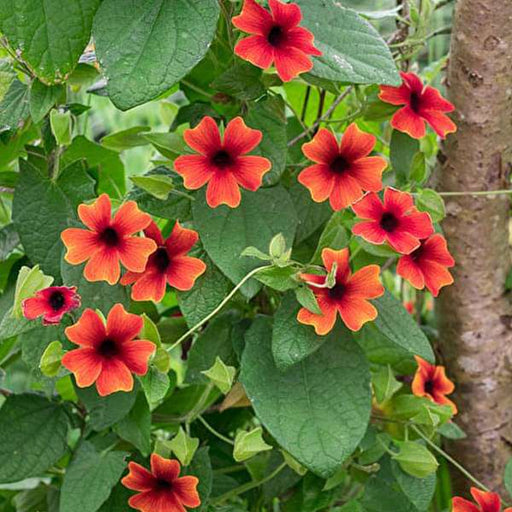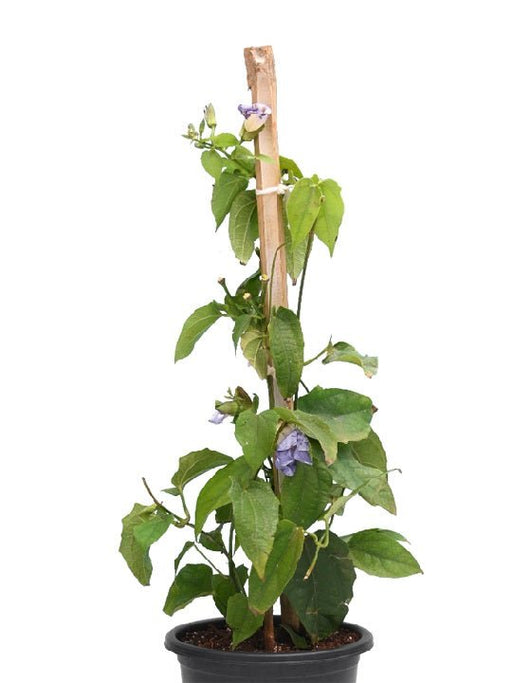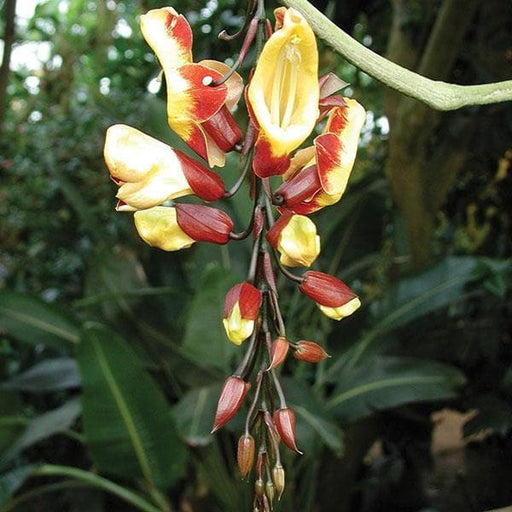Thunbergia alata
Winged wonders! Commonly known as Black-eyed Susan vine, this Thunbergia species displays cheerful orange or yellow flowers, perfect for brightening up your garden.
Thunbergia grandiflora
Grandiose grace! Boasting large, trumpet-shaped flowers, this Thunbergia variety adds a touch of elegance to any garden with its cascading blue or white blooms.
Thunbergia mysorensis
Mysore marvels! Indian Clock Vine's stunning yellow and red flowers drape beautifully over pergolas and archways, adding a tropical flair to your outdoor space.
Thunbergia fragrans
Sweet serenades! Also known as White Lady, this Thunbergia plant's delicate white flowers emit a soft, enchanting fragrance, perfect for romantic garden settings.
Thunbergia care
Tender loving care! Keep your Thunbergia plants happy and healthy by providing them with well-drained soil, moderate water, and plenty of sunlight.
Thunbergia propagation
More, please! Multiply your Thunbergia collection through stem cuttings or seeds, ensuring you'll always have these eye-catching plants to share or savor.
Thunbergia and butterflies
Flitting friends! Thunbergia flowers attract a variety of butterfly species, providing a beautiful, eco-friendly addition to your garden.
Thunbergia in containers
Potted perfection! Grow Thunbergia plants in containers for a versatile, mobile display of delightful blooms.
Thunbergia climbers
Reaching for the sky! Thunbergia plants are fantastic climbers, making them ideal for covering walls, fences, or trellises with vibrant color.
Thunbergia as cut flowers
Bring the beauty indoors! Enjoy Thunbergia's vivid flowers in bouquets and arrangements, brightening up your indoor spaces.
Thunbergia in hanging baskets
Suspended splendor! Showcase Thunbergia's cascading blooms in hanging baskets for an impressive, gravity-defying display.
Thunbergia pests and diseases
Nipped in the bud! Stay vigilant against common Thunbergia plant issues, such as aphids and fungal infections, to maintain your plant's health.
Thunbergia in mixed borders
Harmonious horticulture! Combine Thunbergia plants with complementary species to create stunning mixed borders and flower beds.
Thunbergia for privacy
Natural screening! Use Thunbergia's fast-growing vines to create a living privacy screen or camouflage unsightly structures.
Thunbergia varieties
Diverse delights! Explore the numerous Thunbergia plant varieties, each offering unique colors and growth habits to suit your garden's aesthetic.
Thunbergia in Mediterranean gardens
A touch of the exotic! Include Thunbergia plants in Mediterranean-style gardens for an infusion of vibrant color and tropical charm.
Thunbergia for wildlife gardens
A lively oasis! Incorporate Thunbergia plants into wildlife-friendly gardens, providing nectar for pollinators and habitat for other creatures.
Thunbergia in cottage gardens
Classic charisma! Thunbergia plants blend seamlessly into traditional cottage gardens, contributing an air of nostalgic charm.
Thunbergia and companion plants
Perfect partners! Pair Thunbergia with suitable companion plants, such as Salvia and Lantana, to create a harmonious, flourishing garden.


















































